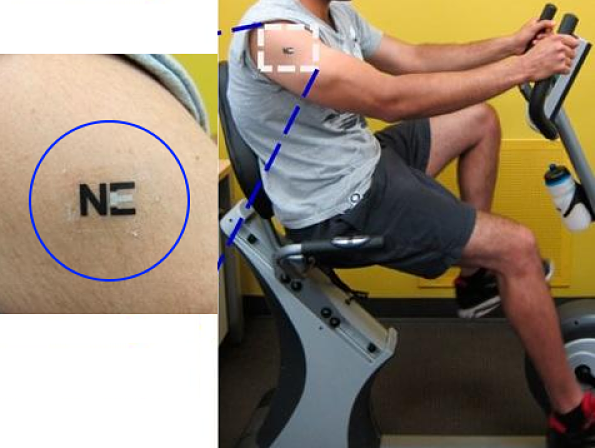New Lactate Biosensor Warns Athletes Who Are About to Hit the Exhaustion Wall
n endurance sports such as the marathon, road cycling and endurance swimming, the term 'hitting the wall' describes a debilitating extreme tiredness, which is caused by the complete depletion of the glycogen stores in the muscles and liver.
The body tries to shift to fat metabolism, but it is much less efficient, and the body runs up an oxygen debt causing the levels of lactate in the blood and muscles to increase.
The rise in lactate level in the blood and tissues triggers extreme exhaustion as all the energy fuel supplies in the body are fully depleted - the tank is empty! In extreme cases the athlete may collapse without warning.
If there was some early warning system that could signal to the athlete that their lactate levels were becoming dangerously high, he or she could slow down and keep within their aerobic work limits.
They could also make decisions about when they should consider pulling out of the race to avoid a black out.
To be effective such monitoring of lactate levels needs to be instantaneous. New research has developed such a device to instantaneous monitor lactate levels.


New Biosensor Patch Developed that is Attached to the Arm and Monitors Lactate Levels in Sweat
Scientists have developed a new biosensor patch-like device that can be attached to the skin like a temporary tattoo. The patch incorporates a very sensitive new way of monitoring lactate level. Symbols on the patch change color when then threshold level of lactate is reached. This displays a warning sign.
This patch could help athletes, soldiers and other people who engage in intense exercise to monitor their condition. Many people who 'hit the wall' do not know what is happening to them. This would provide an early warning system of what is happening so the person can slow down before they collapse.
The sudden exhaustion can render people helpless, and in a confused metal state and likely to harm themselves or suffer possible cardiac arrest. This can be very dangerous and the new patch may help to avoid this. The current methods of measuring lactate require blood samples, hours of analysis and so the results are delayed rather than instantaneous.
The research team trials shows that the sensor accurately monitored lactic acid levels in the sweat of ten volunteer subjects during exercise.
Future research is needed to correlate lactate levels in sweat with levels in the blood and to correlate the lactate readings with the depletion of the glycogen stores in the muscles.
Build up of Lactate Related to Pace
Lactate level can rise when the oxygen consumption rate can't match the work rate.
Runners may build up lactate levels simply by going too fast.
Lactate is a by-product of anaerobic metabolism, that is energy production without oxygen.
It is very short lived as can be seen by the short period of time sprinters can run at peak race.
Monitoring lactate levels is also important in long distance events, such as Marathons and Triathlons to ensure all work is done aerobically and there is no increase in lactate levels. See the image below.